by Sean O’Malley
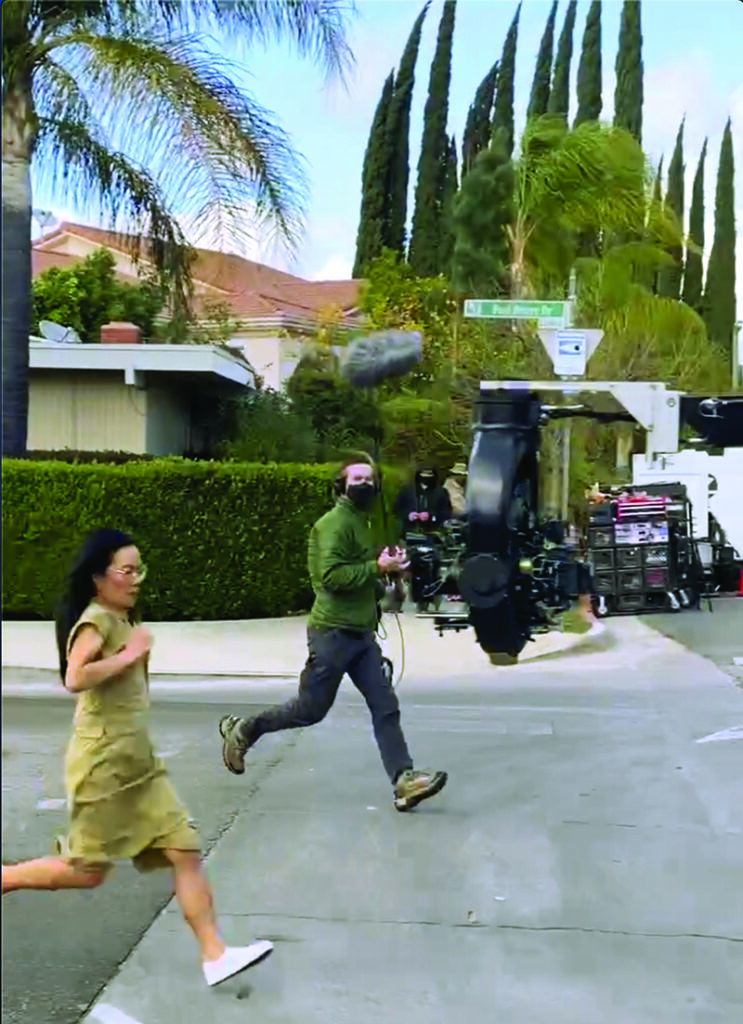
In the fall of 2021, I got connected to the showrunner of Beef through years of working relationships at A24. I met with Lee Sung Jin and was immediately impressed during our interview. He asked if I had any non-sound-related advice since it was his first time as a showrunner, and I had more on-set experience than him. I have no idea what advice I gave him but I do remember the warm feeling I had knowing I was about to embark on a journey with someone who values the opinions of his colleagues. The pilot script for Beef was also fantastic. After being sold on the premise of the show, I was eager to get started.
I tagged along on tech scouts as part of my own prep. After visiting multiple locations and examining our one-liner, I quickly realized the schedule was extremely ambitious. I typically work on one-hour shows with generous production timelines. Beef was the opposite, we had six days per episode shot mostly on location. Having done several years of indie filmmaking during the early days of my career, I knew my crew and I would be fine but that my “run and gun” skills were a bit rusty and would be critical for this type of production. We needed to prepare for a very flexible shoot. I dedicated extra time to prepping my equipment and collaborating with my team to ensure we all shared the same mindset. We loaded our gear the Friday before production and when the door of the truck slammed shut, we felt great.
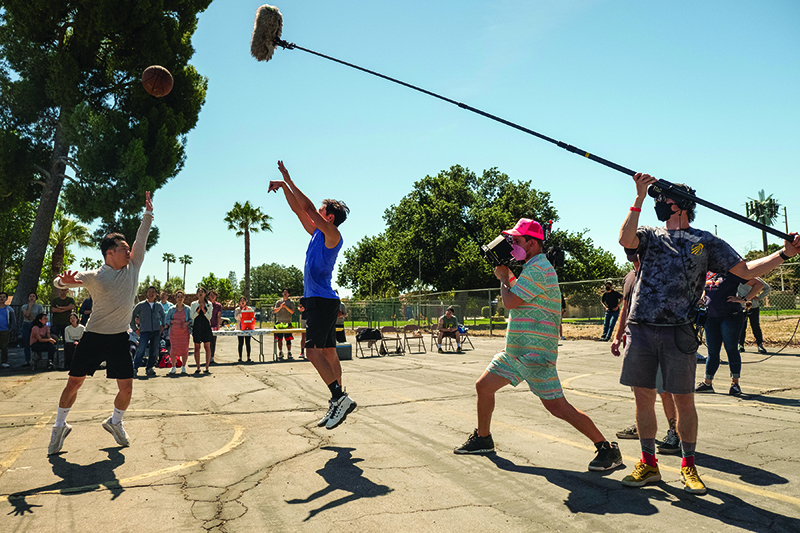
Photo by Andrew Cooper/Netflix © 2023
February 22, 2022, was the first day of production on Beef. On February 21, I woke up with a sore throat and tested positive for COVID for the first time since the pandemic started. I made it nearly two years and then just as I’m about to start a new gig, the inevitable finally happened. Although my symptoms were manageable, the timing could not have been worse. Our initial shot on the first day involved following two bicyclists uphill while delivering dialog spanning several blocks—this initially complex situation became even more complicated in my absence.
Making a good impression on the first day of production is always my top priority, especially on a new show. Not being able to set the initial tone was a huge let down, but knowing I had a trustworthy crew gave me confidence it would still go smoothly. I want to extend endless appreciation to Chris Thueson, our Boom Operator, and Kendra Bates, our Utility Sound Technician, for consistently going above and for ensuring we got off on the right foot. I’d also like to thank Sound Mixers Jeremy Brill and Mark Stockwell for holding down the fort until I was able to come back to work. I know from experience that jumping in on another mixer’s setup can be challenging and frustrating at times since we all do things differently. Jeremy and Mark performed exceptionally well, and their willingness to step in when I was in a tight spot meant a great deal to me.
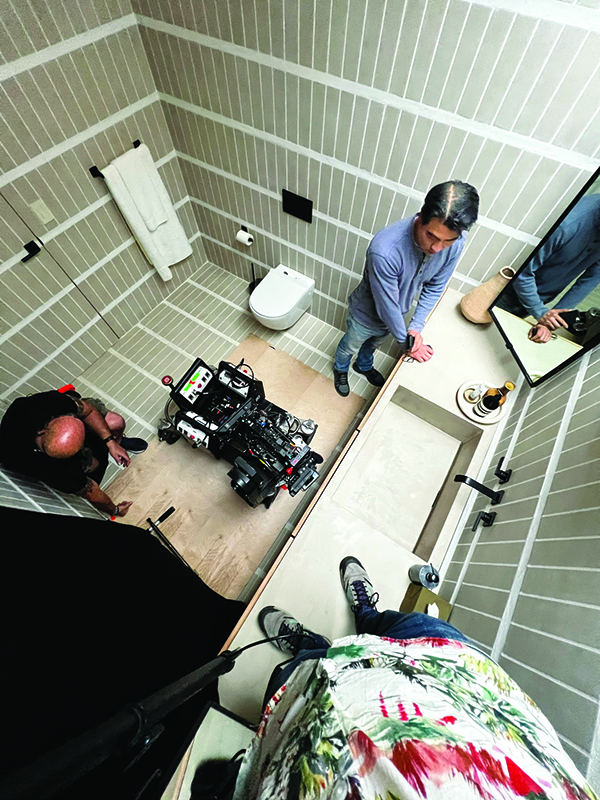
Throughout production, some of our toughest challenges stemmed from the locations and sets. We frequently faced quiet, remote-looking outdoor scenes with major freeways just off camera, and sets with fifteen-foot to twenty-foot ceilings where no number of rugs or furniture blankets could sufficiently mitigate the pronounced reverb. Our aggressive shooting schedule often meant the traditional scene coverage that I’m used to didn’t always happen, so we had to be extra diligent about wiring our actors.
We tracked several live musical numbers that were more challenging than normal due to large-scale set transformations between performances, limiting our setup time. With three live performances squeezed into just two days of shooting, we used pre-recordings of the band but opted to record the vocals live. I brought in Jeff Zimmerman, one of my go-to playback guys, to help out with music. In addition to live vocals, all of the performances were captured in a church filled with background actors. Director Jake Schreier had a strong desire for the musical performances to appear organic to the audience, aiming to capture reactions as though they were genuinely experiencing a live show. I always have a strong preference to record clean vocals with no music bleed, and while we had IEMs for the band, I only got one take of clean vocals for each performance. Ultimately, vocals and pre-recorded instruments were pumped through the PA speakers which meant I needed to isolate as much of the vocals as possible. Although I would have loved to be given more control over my sonic environment, the Lectrosonics HHa transmitter with a Shure beta 87a capsule did a fantastic job of isolating the vocals for me.
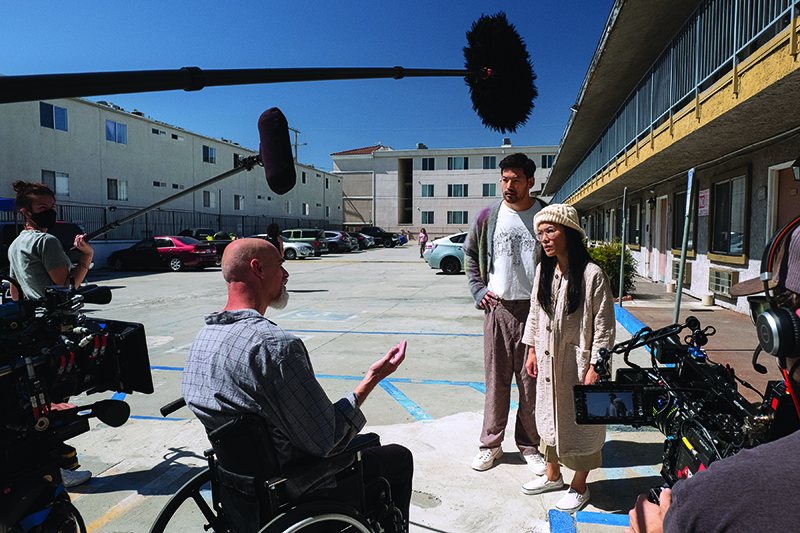
The decision to blend live vocals with pre-recorded music brought an energy and authenticity that would have been impossible to achieve otherwise. One standout moment came from our lead actor, the amazingly talented Steven Yeun, who continued to perform for the background actors even when he was off camera and could have opted to use a pre-recorded vocal track. This was especially significant because he was having issues with losing his voice throughout production. Yeun’s dedication ensured that the magic we captured was as authentic for the background actors as it was for him during his own coverage of the scene.
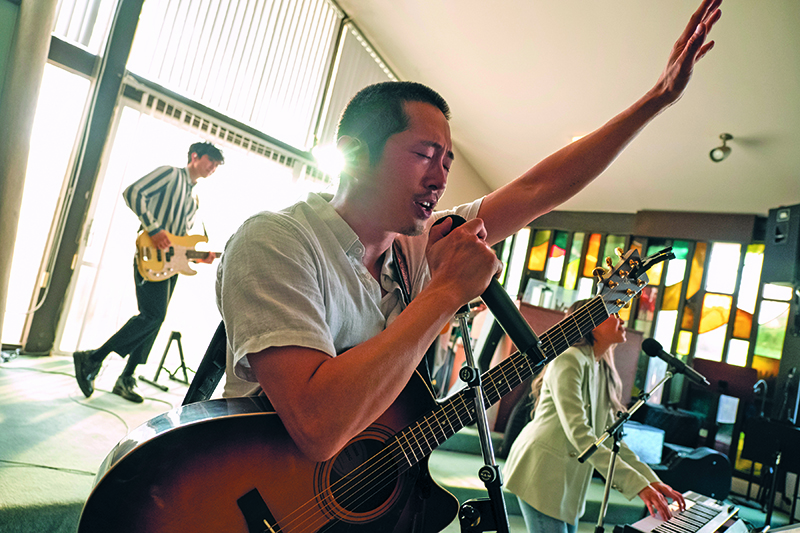
Steven Yeun’s second performance was a cover of “Drive” by Incubus played on an acoustic guitar. This single shot scene used a Technocrane with a telescoping arm that started extremely wide and then moved into a close-up. Boom Operator Chris Thueson grabbed camera perspective until we could fit him in the frame, and our radio mic did the heavy lifting for vocals at the top of the take. We were covered for vocals but the guitar was still out of reach. I tried putting a wireless transmitter inside the body of the acoustic guitar with a DPA 6060 sticking out of the soundhole next to the bridge. While the sound was good, it was a bit too present, and we wanted a sound that captured the performance and still felt as though you were in a church surrounded by people. Chris decided to plant a MKH 50 on a flex arm about three feet away from Steven pointing up toward the guitar from the floor. He collaborated with the AD department to place a background actor in front of the rig (with very specific instructions not to move) and was able to hide it in plain sight by doing so. I mixed both guitar mics together and convinced our first AD to give us one solid take without the camera moving so the editorial team had a boom mic that sounded consistent. In the end, we were able to capture the sound we needed without additional coverage.
Collaboration is even more critical in a tight production shoot. In episode nine, three of our cast members wore large rubber Dick Cheney masks throughout much of the episode. Thankfully, our wardrobe department gave us the masks to test out in advance. Utility Kendra Bates and I tried a few different techniques, and we found the best mic placement was the old puppeteering technique where the actor wears a headband with DPA 6060 attached to it. This technique allowed the actors to more easily take the mask off between takes, avoiding any use of tape on their faces with an added bonus of not sweating off.
We focused on managing the aspects within our control and tried not to let the things we couldn’t change overwhelm us. I’m genuinely pleased with the show’s outcome and deeply thankful for the unwavering support of our crew, without whom none of this would have been achievable.
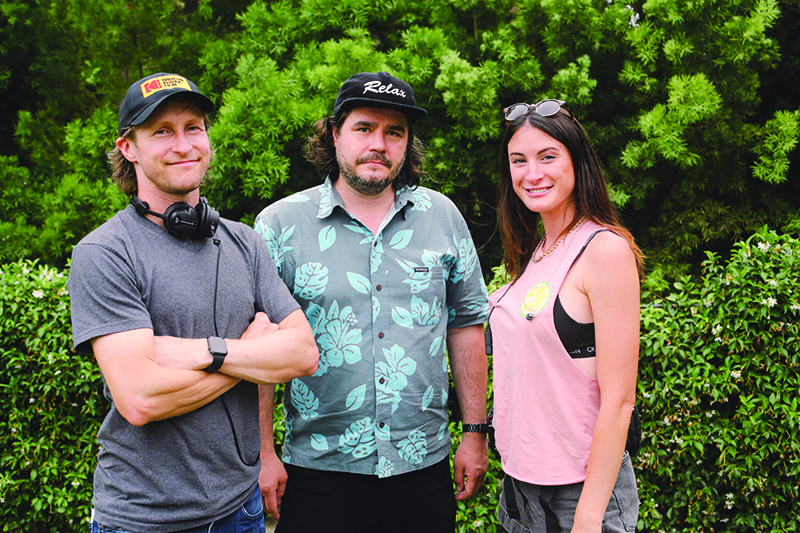
Now onto the gear! Keeping up with the latest technology is important in order to stay relevant in this constantly changing field, but I’m also a firm believer in working with the equipment that works best for you. Our end goal is to produce a great sounding show, and equipment is just one factor in accomplishing that. I use a Sound Devices Scorpio with the CL16 control surface for my primary recorder. The interface is very user-friendly, the recorder is robust, and I often use the Dante port to integrate multiple systems, making it easier to expand the functionality of my cart. My favorite microphone to date is the classic Sennheiser MKH 50. No microphone is perfect but the MKH 50 will always have a spot in my mic drawer if it’s not already connected to the boom pole. One of my more unusual pieces of gear is the Holophone H2 5.1 surround sound microphone. If I’m recording in a sonically interesting environment, such as a football stadium full of fans, I like to capture that environment in surround sound. We only use the Holophone if we have extra time or if production agrees to bring in a recordist, but it’s a fun way to keep our creative minds sharp during non-dialog-heavy shoots.
No amount of equipment can compare to the real ace up my sleeve—my crew! I’ve had the pleasure of working with Boom Op Chris Thueson for seven years. He’s a kind and thoughtful person who always gives 110%. His attention to detail during setups is directly related to our success, and he understands enough about everyone else’s job to know how, when, and what to ask for when we need assistance from other departments. Chris’s pleasant and attentive demeanor will also convince even the grumpiest of grumpy grips to flag off a problematic light.
Utility Kendra Bates has been the heart of our team for three years. She’s always the first person to set in the morning and if I accidentally showed up an hour early, she’d still beat me. Her happy and upbeat disposition puts the actors at ease, which is especially valuable when working with children, who require additional attention and reassurance. Kendra is also ready to hop in at a moment’s notice. When I need her on set, she already knows why and is there before I’m done calling her.
I feel an overwhelming sense of gratitude for my journey thus far. It’s been a mix of hard work, learning from the best, and some good old-fashioned luck. I’ve had the privilege to work with talented individuals and witness the magic of sound come to life in countless projects. It’s not just about the gear and the craft; it’s about the people who’ve supported and inspired me along the way. As the strikes end, the financial impact lingers on. My thoughts are with all my fellow IATSE members who are still struggling. Stay positive and don’t be afraid to ask your community for help. We’re all in this together.